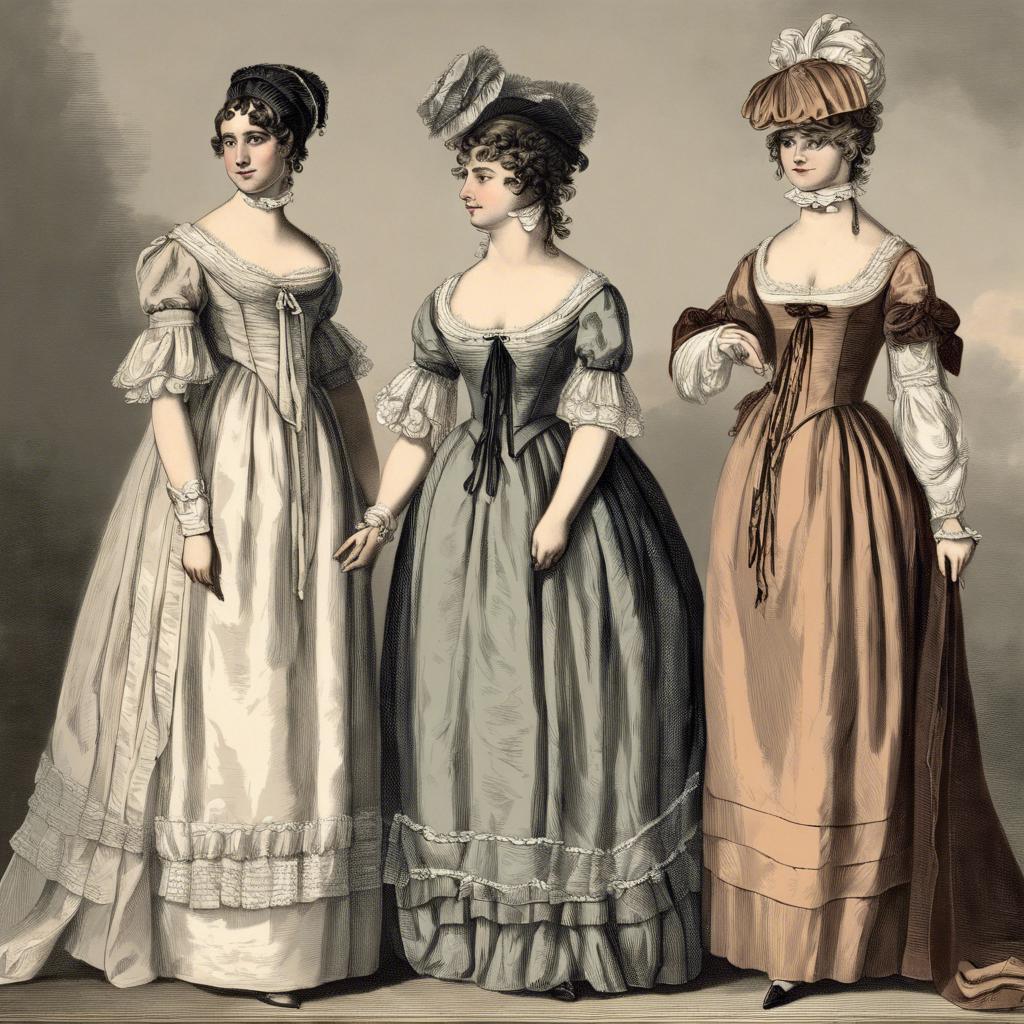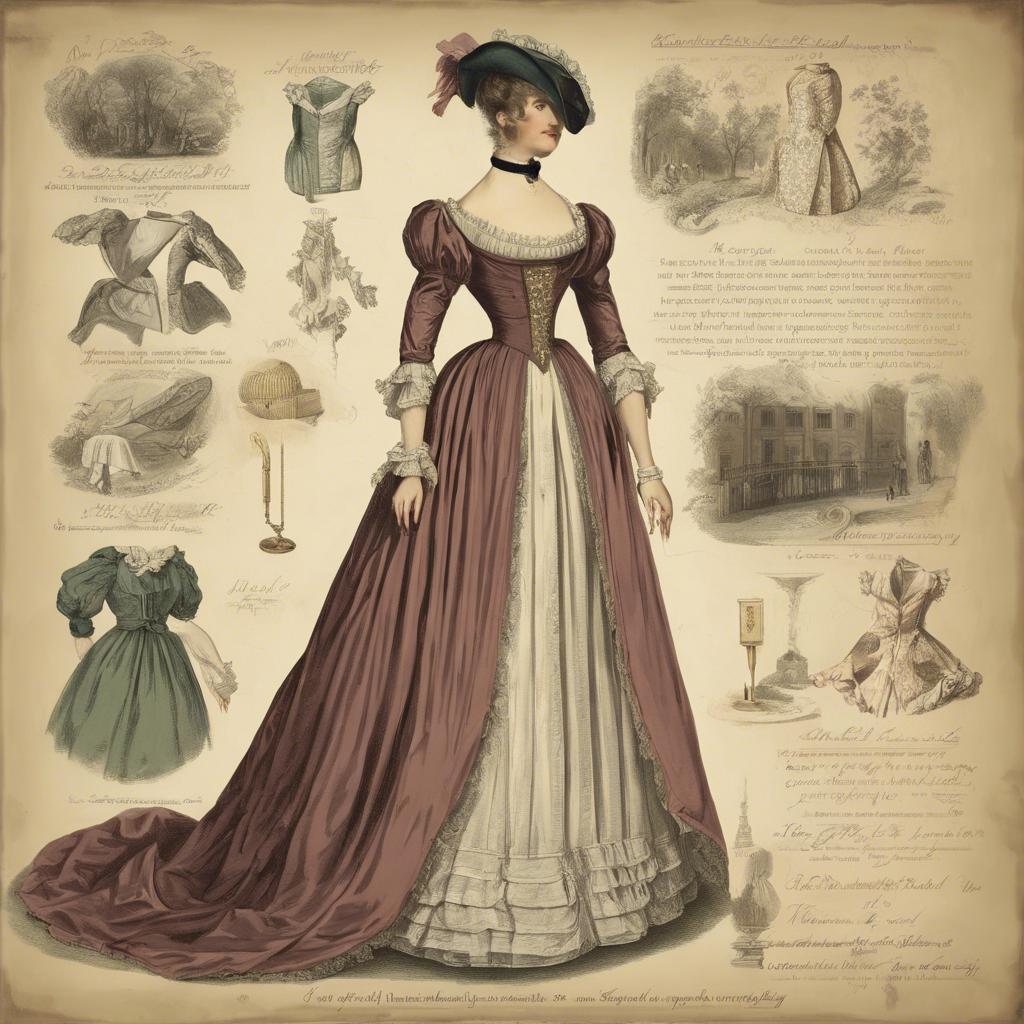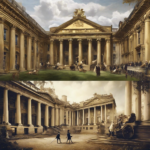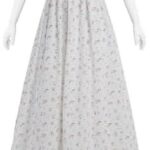In the opulent world of Regency England, a strong emphasis was placed on the outward appearance as a reflection of one’s rank, wealth, and social standing. The attire of the Regency era was a carefully curated expression of one’s taste and refinement, with fashion serving as a powerful tool for making a lasting impression. From the intricate silks and muslins favored by the elite to the understated elegance of the middle class, Regency era fashion showcased an unparalleled attention to detail and craftsmanship. Join us as we delve into the sartorial splendor of the Regency era and explore how dress played a pivotal role in shaping societal norms and perceptions.
Step Into the World of Cheryl Bolen
Dive into the enchanting stories of love, intrigue, and elegance set in the Regency Era. Cheryl Bolen's novels offer timeless romance and captivating tales that will leave you wanting more.
Explore Cheryl Bolen's Books Now
The Foundations of Regency Era Fashion
During the Regency Era, fashion was a crucial aspect of society, with both men and women adhering to strict guidelines for attire. Women’s fashion during this period was characterized by high waistlines, flowing fabrics, and delicate embellishments. One iconic piece of clothing from this era is the Empire waist dress, which featured a high waistline just below the bust, emphasizing a woman’s natural figure. These dresses were often made from lightweight fabrics such as muslin and silk, creating an elegant and feminine silhouette.
Men’s fashion in the Regency Era was equally as important, with men expected to dress with sophistication and refinement. The typical ensemble for a Regency gentleman included tailored coats, waistcoats, and breeches, all made from luxurious fabrics such as wool and silk. Accessories such as top hats, gloves, and cravats were also essential to complete the look.
the fashion of the Regency Era was a reflection of the societal ideals of the time, with an emphasis on elegance, refinement, and sophistication. Both men and women adhered to strict fashion guidelines, with clothing playing a crucial role in establishing one’s social status and demonstrating one’s wealth and taste. continue to influence modern styles, with elements such as the Empire waist dress and tailored suits remaining popular choices for formal events and special occasions.
Intricate Details and Luxurious Fabrics
Transport yourself back in time to the elegant world of the Regency era, where were the epitome of fashion. During this period, women’s fashion was characterized by flowing silhouettes, delicate embroidery, and opulent materials that showcased wealth and sophistication.
One of the most iconic garments of the Regency era was the Empire waist dress, which featured a high waistline just below the bust, creating a flattering and feminine silhouette. These dresses were often made from sumptuous fabrics such as silk, satin, and velvet, embellished with intricate lace or beadwork for added embellishment.
When it came to accessorizing these exquisite dresses, women of the Regency era spared no expense. Delicate gloves, ornate jewelry, and embroidered shawls were essential finishing touches that elevated their ensembles to new heights of elegance. Every detail was carefully considered, from the intricate patterns of the fabric to the luxurious trims that adorned the edges of sleeves and hemlines.
Accessorizing for Regency Elegance
In the Regency era, accessorizing was a crucial element of achieving elegance and sophistication in one’s attire. Whether attending a ball or a social gathering, the right accessories could elevate a woman’s ensemble to new heights of fashion.
For a touch of refinement, consider adorning your hair with delicate pearl-encrusted hair combs or feathered headpieces. These accessories not only add a touch of glamour but also help to frame the face and accentuate one’s features.
When it comes to jewelry, opt for pearl necklaces or sparkling chandelier earrings to add a hint of luxury to your look. Remember, simplicity is key in Regency fashion, so choose one statement piece to complement your outfit rather than wearing multiple pieces that may clash.
Tips for Modern Interpretations of Regency Style
In order to achieve a modern interpretation of Regency style, it is important to consider the key elements of this era while incorporating contemporary touches. One way to do this is by opting for empire waist dresses, which were a popular silhouette during the Regency period. Pairing these dresses with modern accessories such as statement jewelry or sleek heels can create a fusion of old and new.
Another tip for embracing Regency style in a modern context is to play with patterns and textures. Consider incorporating delicate floral prints, intricate lace details, or luxurious fabrics like silk or velvet into your wardrobe. Mixing these traditional elements with modern cuts or silhouettes can add a fresh twist to your look.
When it comes to hair and makeup, simplicity is key for a modern Regency style. Opt for soft curls, natural makeup, and minimalistic hairstyles to achieve an elegant and timeless look. To complete your ensemble, consider adding a regal touch with a delicate fan or a vintage-inspired parasol.
Wrapping Up
the Regency Era was a time of elegance, sophistication, and impeccable style. From the intricate embroidery to the flowing silhouettes, fashion during this period was a true reflection of the societal norms and cultural values of the time. By understanding and appreciating the clothing of the Regency Era, we gain a deeper insight into the complexities of life during this period. So next time you attend a Regency-themed event or costume party, be sure to channel your inner Jane Austen heroine and embrace the sartorial elegance of the Regency Era. Dress to impress, and let your outfit tell a story of a bygone era that continues to captivate us to this day.


